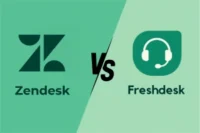SD-WAN vs Traditional WAN: Key Comparison
Published: 4 Mar 2025
Networking plays a crucial role in connecting devices and enabling smooth data transfer across various locations. Traditionally, businesses relied on Wide Area Networks (WANs) to connect different branches and remote sites. However, with the rise of cloud computing and increasing network demands, a more advanced solution emerged: Software-Defined Wide Area Network (SD-WAN).

This article explores the key differences between SD-WAN and Traditional WAN, covering aspects like performance, cost, security, and ease of management.
Quick Comparison Table: SD-WAN vs Traditional WAN
This table highlights the key differences between SD-WAN and Traditional WAN, making it easier to choose the right solution based on business needs.
| Feature | SD-WAN | Traditional WAN |
| Network Type | Software-defined, cloud-friendly | Hardware-based, centralized |
| Performance | High, optimized for cloud apps | Slower, relies on fixed paths |
| Security | Built-in encryption, zero-trust | Requires external security solutions |
| Cost | Lower, uses affordable connections | Higher, relies on expensive MPLS lines |
| Scalability | Easy to scale up/down | Difficult and costly to expand |
| Cloud Integration | Direct cloud access | Requires centralized routing |
| Management | Centralized, AI-driven | Manual configuration needed |
| Failover & Redundancy | Automatic failover | Manual intervention required |
| Best For | Businesses using cloud services | Organizations needing private MPLS lines |
Differences between SD-WAN and Traditional WAN
Here we discuss the key comparison: SD-WAN vs Traditional WAN to make the right choice:
1. Definition and Basics
SD-WAN:
- Software-defined WAN is a virtualized network approach that optimizes traffic routing using intelligent software.
- It uses multiple connection types, including broadband, LTE, and MPLS, to improve network performance.
- Businesses use SD-WAN to manage complex networks more efficiently.
- It allows direct cloud access without routing traffic through a central data center.
- SD-WAN solutions are managed via a centralized dashboard, simplifying network control.
Traditional WAN:
- WAN (Wide Area Network) is a conventional networking approach that connects different locations using private circuits or MPLS (Multiprotocol Label Switching).
- Typically, it relies on leased lines or dedicated connections for secure data transmission.
- All traffic is usually routed through a centralized data center before reaching cloud applications.
- Traditional WAN requires manual configuration and dedicated IT staff for network management.
- It has limited scalability and struggles to support modern cloud-based applications.
2. Performance and Speed
SD-WAN:
- SD-WAN dynamically optimizes traffic flow, reducing latency and improving application performance.
- It prioritizes critical applications, ensuring smooth operation for VoIP, video conferencing, and cloud services.
- Can use multiple network paths (MPLS, broadband, LTE) simultaneously for better speed.
- Implements real-time monitoring to adjust bandwidth allocation as needed.
- Provides automated failover, switching to backup connections instantly during failures.
Traditional WAN:
- Traditional WAN depends on static routing, which can cause delays in high-traffic situations.
- It struggles to handle cloud applications efficiently due to its centralized data routing.
- Uses fixed bandwidth allocation, which may lead to bottlenecks during peak usage.
- Network performance depends heavily on MPLS or leased line reliability.
- Failover mechanisms require manual intervention, increasing downtime during outages.
3. Security and Data Protection
SD-WAN:
- Offers built-in security features such as encryption, firewall integration, and threat detection.
- Uses zero-trust architecture to ensure only authorized users access the network.
- Provides end-to-end encryption for secure communication across multiple locations.
- Includes cloud-based security solutions to protect against cyber threats.
- Enables real-time monitoring to detect and prevent suspicious activities.

Traditional WAN:
- Security relies heavily on MPLS networks, which offer private connections but lack advanced security controls.
- Typically requires external firewalls and security appliances for protection.
- Centralized data routing increases exposure to single-point-of-failure risks.
- Less flexibility in integrating modern cybersecurity solutions.
- Security policies are often manually configured, making them prone to human errors.
4. Cost and Budget Considerations
SD-WAN:
- More cost-effective as it reduces dependency on expensive MPLS connections.
- Can leverage affordable broadband and LTE for cost savings.
- Reduces operational costs by simplifying network management.
- Requires less IT staff for maintenance, lowering labor expenses.
- Subscription-based pricing makes it easier to scale as needed.
Traditional WAN:
- Expensive due to dedicated MPLS circuits and leased lines.
- High maintenance costs due to manual configuration and dedicated hardware.
- Requires on-site IT personnel for network monitoring and troubleshooting.
- Scaling up means additional hardware investments, increasing overall expenses.
- Not flexible in adapting to budget constraints or sudden network expansions.
5. Cloud Integration and Scalability
SD-WAN:
- Designed to work seamlessly with cloud services like AWS, Microsoft Azure, and Google Cloud.
- Directs cloud-bound traffic efficiently without routing through data centers.
- Can easily scale up or down based on business needs.
- Uses automated policies to adjust resources dynamically.
- Supports remote workforces with secure cloud access.
Traditional WAN:
- Not optimized for cloud applications, leading to increased latency.
- All cloud traffic must pass through centralized data centers, slowing performance.
- Scaling up requires significant infrastructure upgrades.
- Poor flexibility in handling remote or hybrid work environments.
- Higher dependency on physical hardware limits scalability.
6. Network Management and Ease of Use
SD-WAN:
- Provides a centralized control panel for managing all network traffic.
- Uses AI-driven automation to adjust network performance dynamically.
- IT teams can configure, monitor, and troubleshoot remotely.
- Offers real-time analytics to track network health and usage.
- Easy to deploy and manage, reducing administrative workload.

Traditional WAN:
- Requires manual configuration of network devices.
- IT staff must physically access routers and switches for troubleshooting.
- Changes in network settings take longer and need manual intervention.
- Lacks intelligent traffic optimization features.
- Scaling and updates demand high technical expertise.
7. Which is Better: SD-WAN or Traditional WAN?
Both SD-WAN and Traditional WAN serve different purposes based on business needs.
- Choose SD-WAN if: You need a flexible, cost-effective, and cloud-friendly network with improved security and automated management.
- Choose Traditional WAN if: You require private, dedicated MPLS lines for security and have an on-site IT team to manage complex networks.
For modern businesses, SD-WAN is the preferred choice due to its scalability, cost savings, and enhanced cloud compatibility. However, organizations with strict security regulations and legacy systems may still prefer Traditional WAN.
Conclusion
SD-WAN is a modern networking solution that offers better flexibility, security, and cost savings compared to Traditional WAN. It is designed for cloud integration and remote access, making it ideal for businesses with evolving network needs.
While Traditional WAN still provides secure and dedicated connections, it lacks the scalability and automation that SD-WAN offers. Due to better performance and lower costs, most organizations are migrating to SD-WAN for a more efficient networking experience.
FAQs about SD-WAN and Traditional WAN
Here are some of the most FAQs related to SD-WAN and Traditional WAN:
SD-WAN is software-driven and uses multiple internet connections, while Traditional WAN relies on fixed MPLS circuits with manual routing.
Yes, SD-WAN includes built-in encryption, firewalls, and zero-trust security, making it more secure than Traditional WAN.
Yes, for most businesses, SD-WAN offers better performance, flexibility, and cost savings, making it a strong replacement for Traditional WAN.
SD-WAN is better because it allows direct cloud access, reducing latency and improving performance compared to Traditional WAN.
No, SD-WAN can work with broadband, LTE, and fiber connections, reducing the need for expensive MPLS circuits.
Yes, SD-WAN lowers costs by using public internet connections and eliminating the high expenses of MPLS circuits.
Yes, SD-WAN is scalable and cost-effective, making it suitable for small businesses that need reliable networking.
No, Traditional WAN is not optimized for remote work or cloud-based applications, unlike SD-WAN.
It optimizes traffic, prioritizes critical applications, and uses multiple connections to enhance speed and reliability.
No, SD-WAN is easier to deploy and manage than Traditional WAN, thanks to centralized control and automation.

- Be Respectful
- Stay Relevant
- Stay Positive
- True Feedback
- Encourage Discussion
- Avoid Spamming
- No Fake News
- Don't Copy-Paste
- No Personal Attacks

- Be Respectful
- Stay Relevant
- Stay Positive
- True Feedback
- Encourage Discussion
- Avoid Spamming
- No Fake News
- Don't Copy-Paste
- No Personal Attacks





